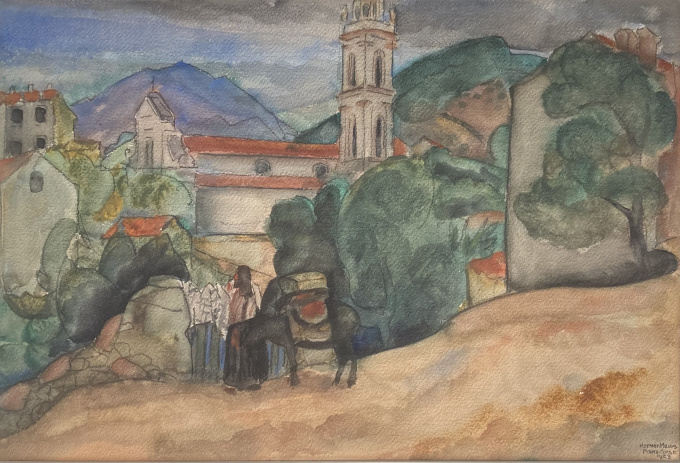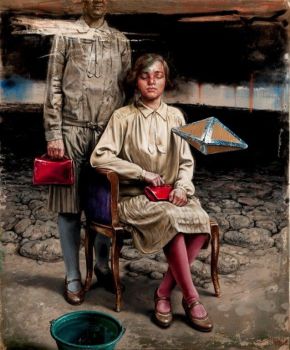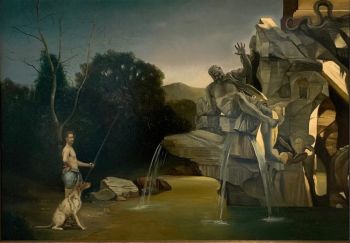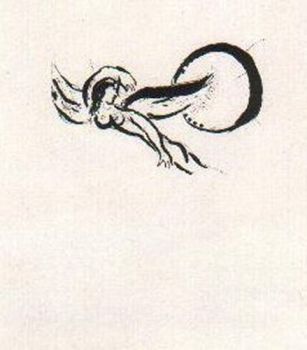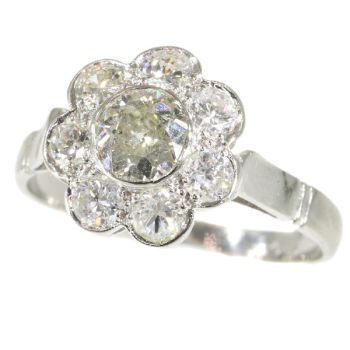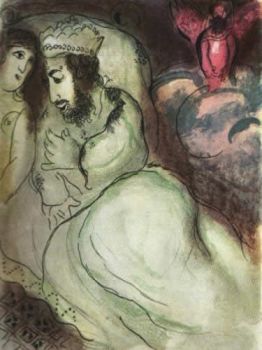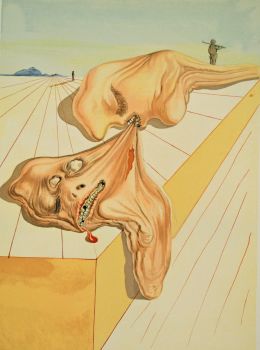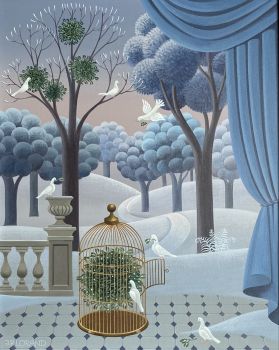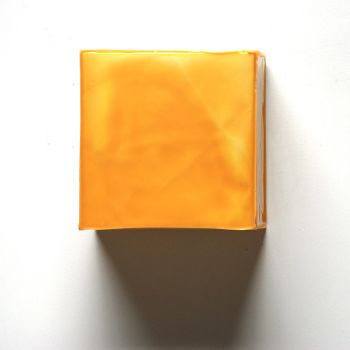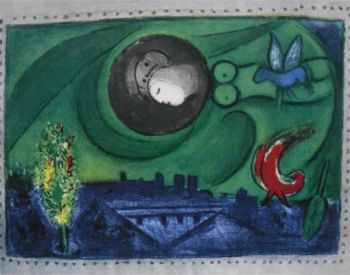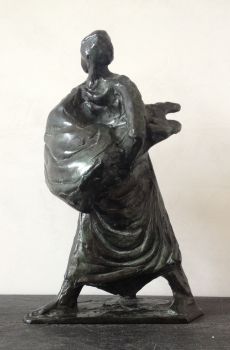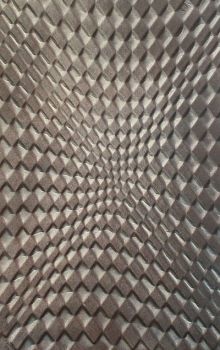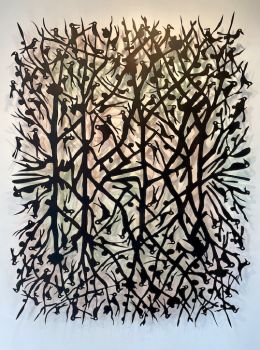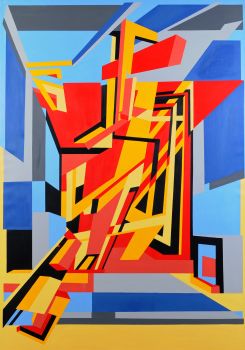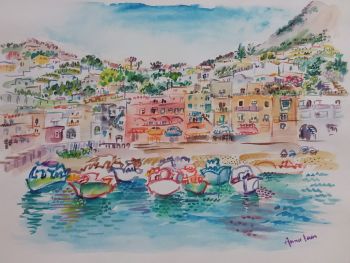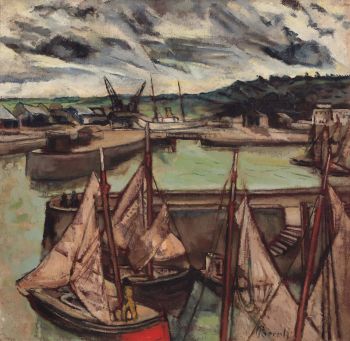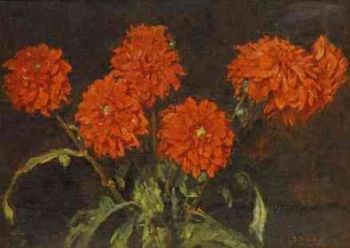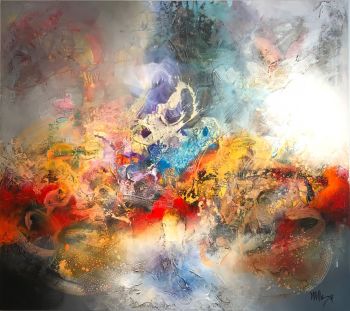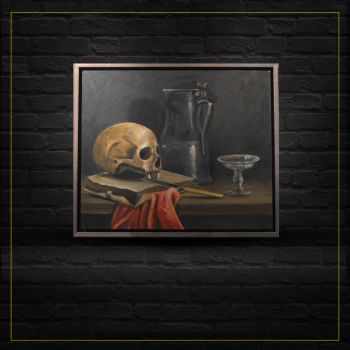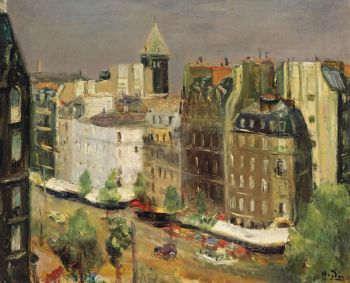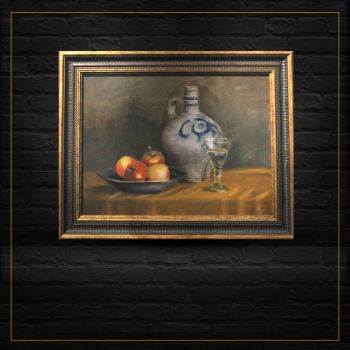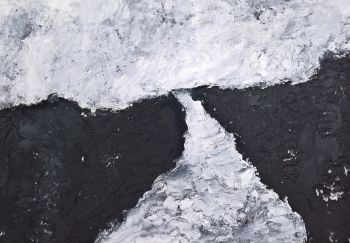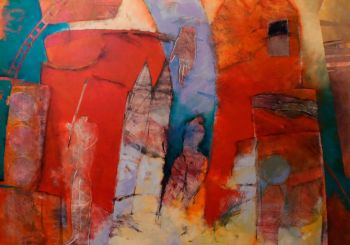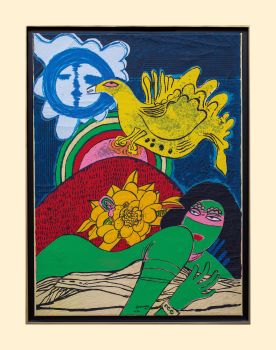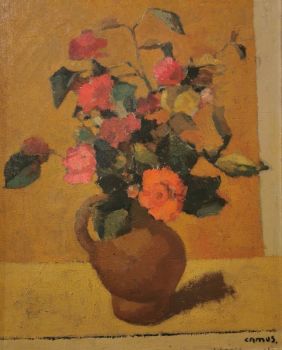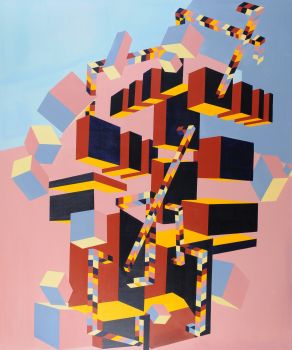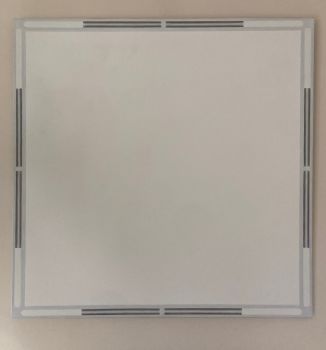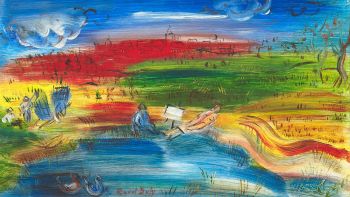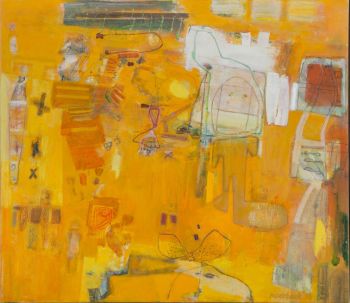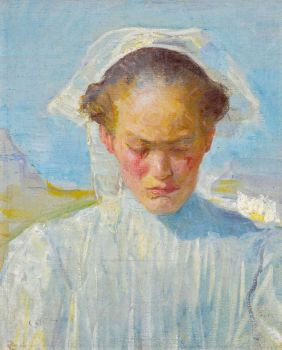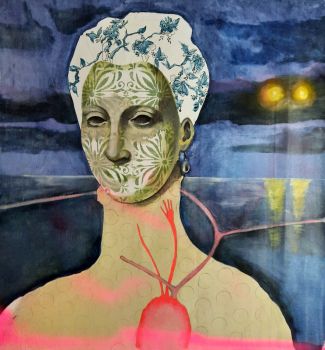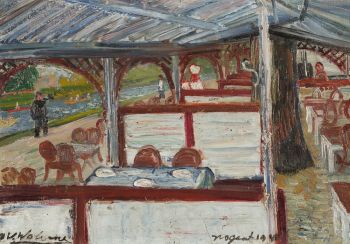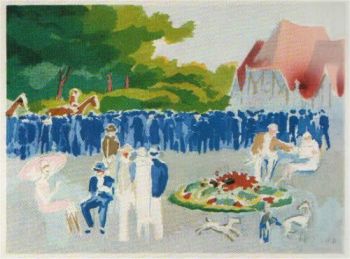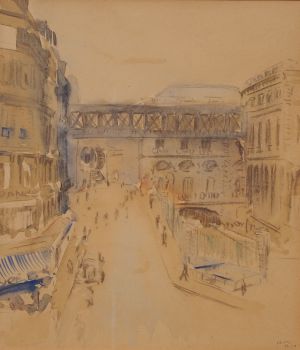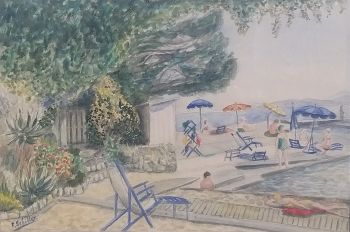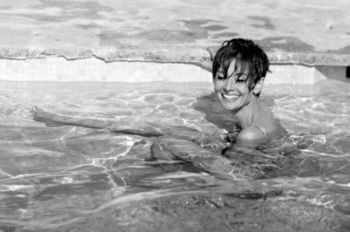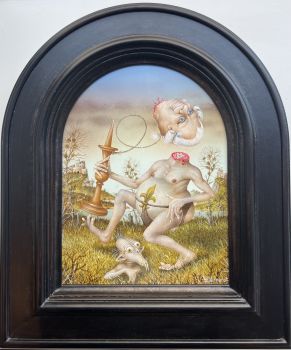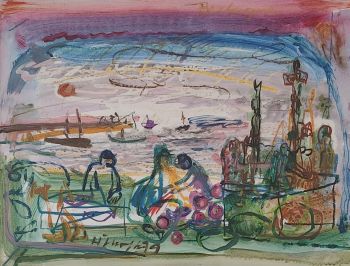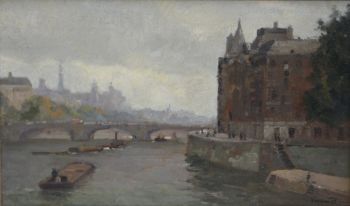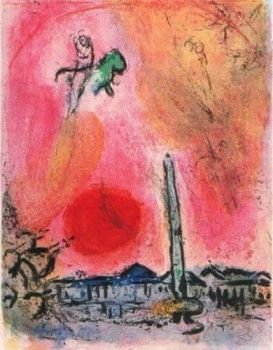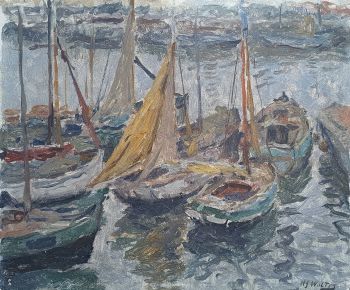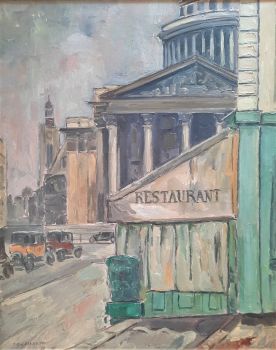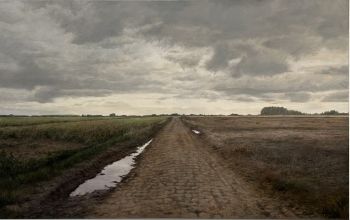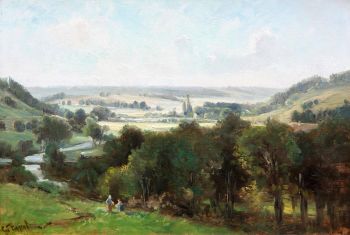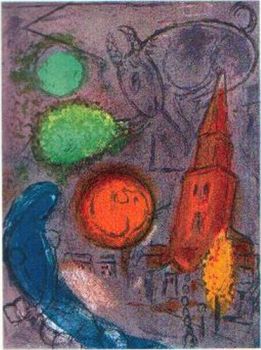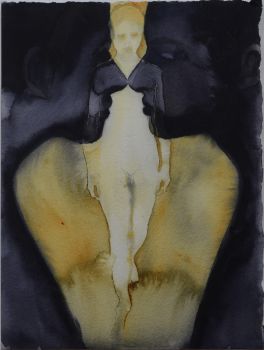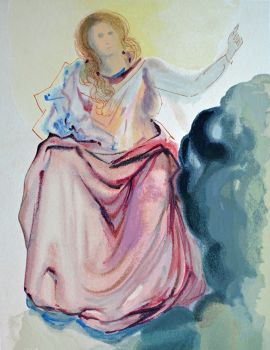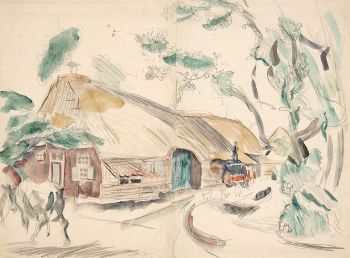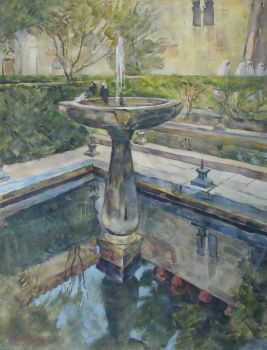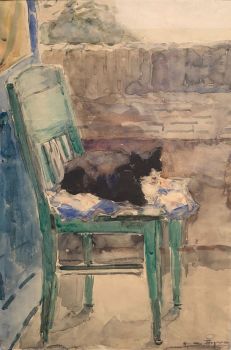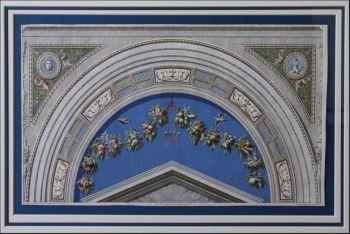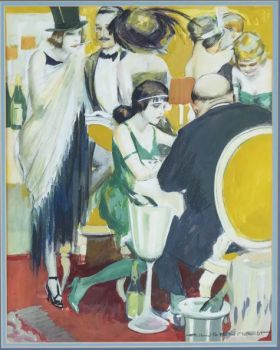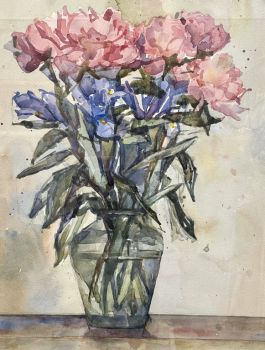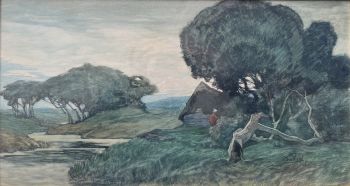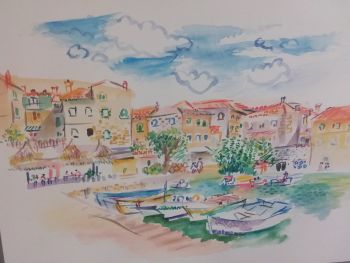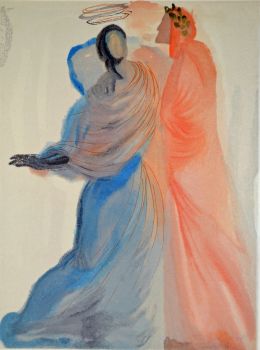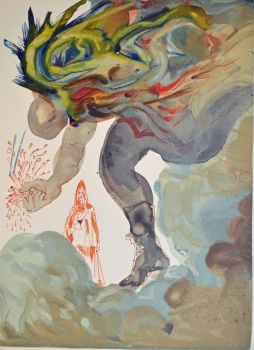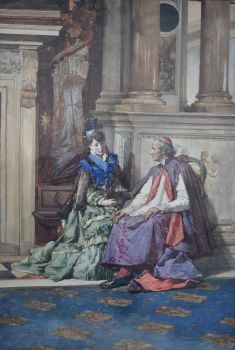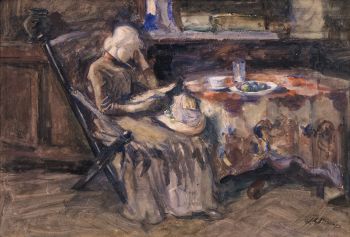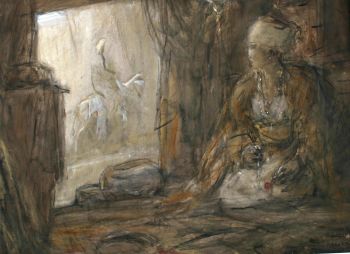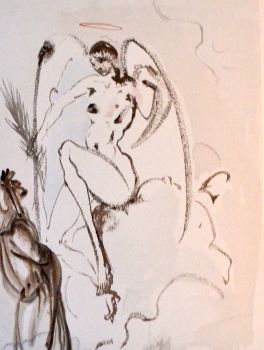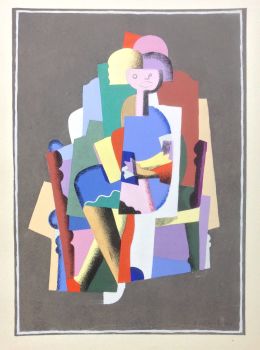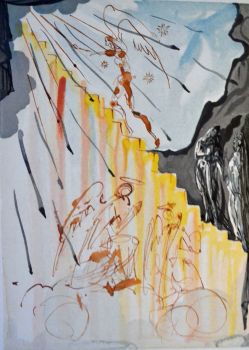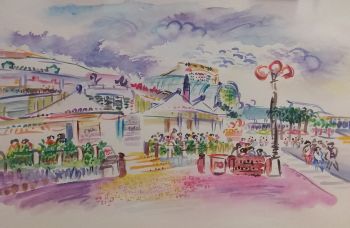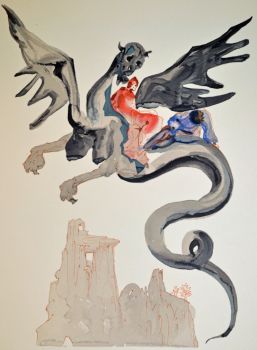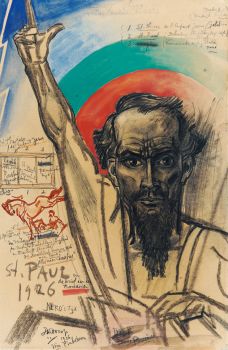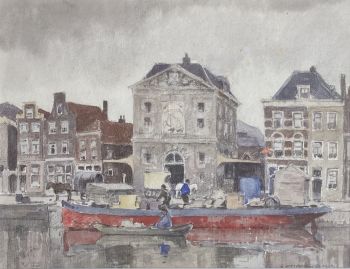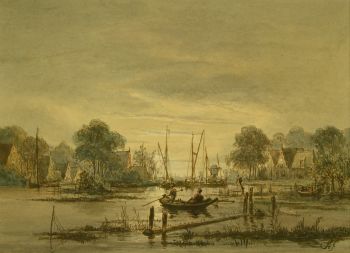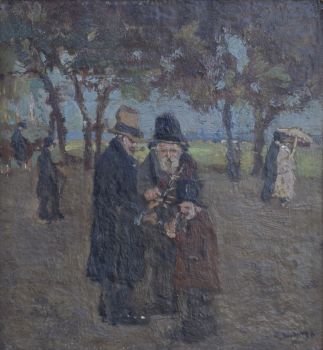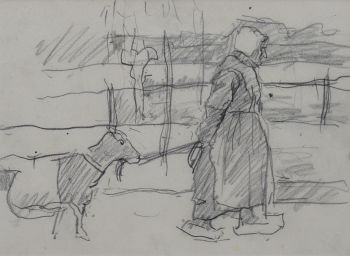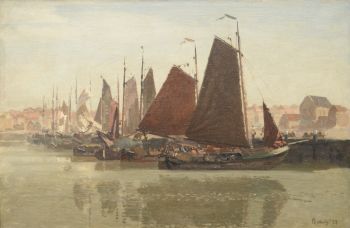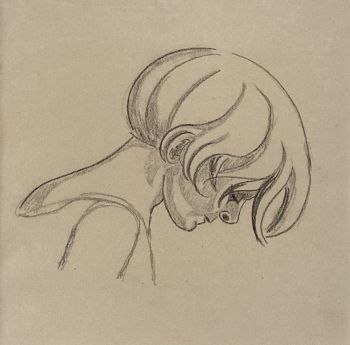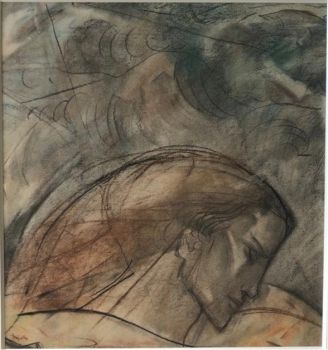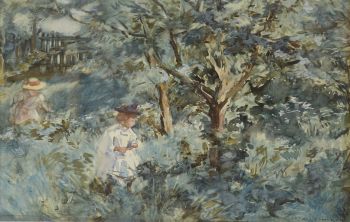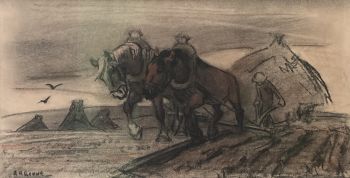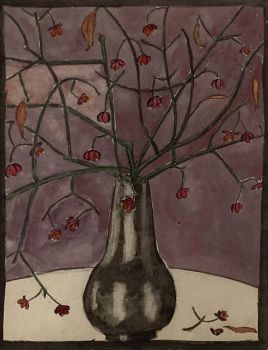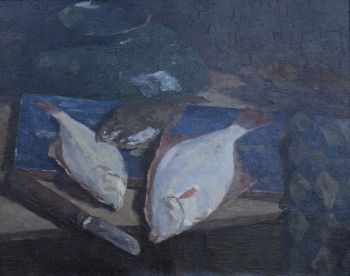Piana Corsica 1923
Harmen Meurs
Acquerello
33.50 ⨯ 49.50 cm
Attualmente non disponibile tramite Gallerease
Artiquair
- A proposito di opere d'arteMeurs studied in the evenings at the Rijksakademie van Beeldende Kunsten in Amsterdam. He lived and worked mainly in Wageningen, Amsterdam and he traveled a lot to France. From 1919, Meurs was able to run his own studio. In the same year he joined the artist group De Onafhankelijken. Which artist spent a lot of time at Corsica.
As a painter, Meurs developed into a successful artist, who also exhibited abroad. He painted landscapes, figures and still lifes in an initially post-impressionistic style. Because he was inspired by the Cubism expressionism (Bergense School) and the Fauvism of Kees van Dongen (1877-1968), his work became increasingly realistic from the 1920s. It showed a relationship with the 'Neue Sachlichkeit'. From 1925 he started to work more realistically.
Harmen Meurs was friends with Carel Willink (1900-1983). Willink later characterized the painter as a 'dandy' because of his always neat clothing and appearance. With neatly trimmed long sideburns. This was not to say, however, that Meurs was only active in elite artistic circles. On the contrary.
Meurs was appointed chairman of The Independents in 1929. In this position he organized the controversial exhibitions Neue Sachlichkeit (1929) and of French and Belgian surrealists (1930).
As an anti-fascist, he expressed his social commitment and political stance by bringing in a banned exhibition from Berlin in 1933 - as chairman of the Independents. The Amsterdam mayor Van der Vlugt and director Baard of the Stedelijk Museum banned the exhibition.
During the occupation he refused to become a member of the Reichskulturkammer and thus became isolated as an artist. During the war he continued to paint anti-Nazi works. After the occupation he left Amsterdam and moved into a house near Putten with his wife, the Jewish painter Berthe Edersheim.
After the war he led a more or less withdrawn life. Disappointed with what had happened in WW II. - A proposito di opere artista
Harmen Hermanus Meurs è stato un pittore e acquerellista olandese. Tra il 1909 e il 1912 andò alla Rijksschool voor Kunstnijverheid e alla Rijksakademie van Beeldende Kunsten (Accademia Nazionale di Belle Arti), entrambe ad Amsterdam. Gli fu insegnato da Louis Raemaekers, un fumettista politico. Nel 1918, Meurs si unì all'associazione di artisti De Onvangenen (The Independents). Fu il loro presidente fino al 1932.
Meurs divenne un noto artista che espose anche all'estero. Dipinse paesaggi, paesaggi urbani e ritratti, ma si specializzò principalmente nella pittura di scene di contadini e nature morte di fiori. Il suo stile inizialmente era post-impressionista. Successivamente si ispirò all'espressionismo e al fauvismo. Dal 1925 in poi, il suo lavoro è diventato più realistico ed è stato simile alla "Neue Sachlichkeit" (Nuova oggettività).
Fu attivo nei Paesi Bassi e in Francia. Si recò a Parigi per una mostra sul Surrealismo tedesco e belga nel 1930, per conto di De Onvangenen. Quella mostra, allo Stedelijk Museum, è stata la prima mostra sul Surrealismo nei Paesi Bassi.Meurs era un feroce oppositore dei nazisti e lo dimostrò nelle sue opere. Rifiutò di diventare un membro della Reichskulturkammer e si isolò come artista. Dopo la guerra si recò in Spagna e Francia. Meurs continuò a dipingere fino alla sua morte nel 1964.
Sei interessato ad acquistare questa opera d'arte?
Artwork details
Related artworks
- 1 - 1 / 1
- 1 - 4 / 24
- 1 - 4 / 24
Bob Buys
Paris, Gare de L'Est, Passerelle de la Rue d'Alsace1940 - 1950
Prezzo su richiestaAdelwein Kunst
Herman Bogman jr.
Le Pont au Change et Le Conciergerie in Paris 1935 - 1945
Prezzo su richiestaAdelwein Kunst
1 - 4 / 20Carel Nicolaas Storm van 's Gravesande
View on Venice1841 - 1924
Prezzo su richiestaKunsthandel Pygmalion
Bernard Schregel
Landscape with a stream and a sheepfold 1890 - 1900
Prezzo su richiestaAdelwein Kunst
Herman Bogman jr.
Flower still life of a nasturtium in a blue vase1950 - 1965
Prezzo su richiestaAdelwein Kunst
1 - 4 / 24- 1 - 4 / 12

